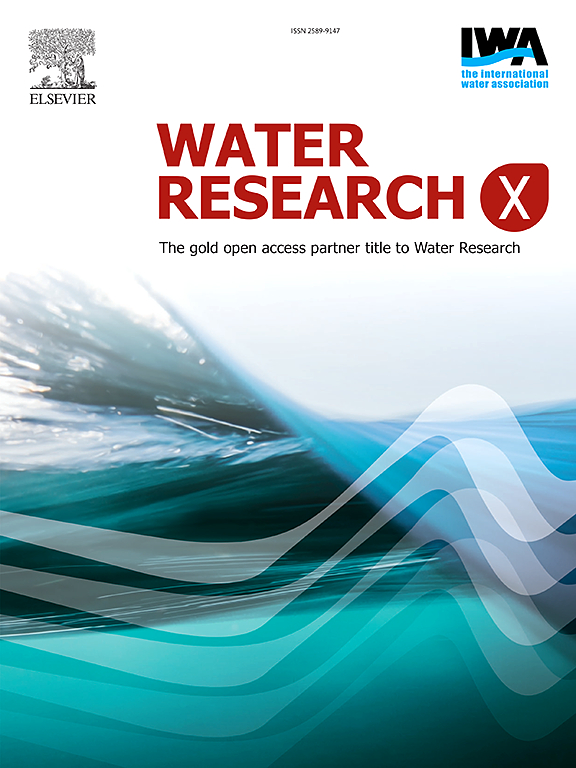Assessment of methane and nitrous oxide emissions from urban community sewer networks: Field quantification and insights into environmental factors
IF 7.2
2区 环境科学与生态学
Q1 ENGINEERING, ENVIRONMENTAL
引用次数: 0
Abstract
Sewer networks are essential components of urban infrastructure, yet their contribution to greenhouse gas (GHG) emissions remains poorly understood. In this study, we deployed a new approach of in situ measurements to assess methane (CH4) and nitrous oxide (N2O) emissions across an urban sewer network, which spans 4769.43 m and receives about 750 m3 of domestic sewage per day. By monitoring at 248 and 151 sites for concentrations and fluxes respectively, we confirmed local GHG hotspots. Overall, the sewer network's total GHG emissions were estimated to be 763.3 g CO2eq/h, with CH4 accounting for 99.4 % of the emissions. The mean emission factor was estimated to be 1.05 kg CO2eq/(m·yr). N2O concentrations above the atmospheric background were detected in almost every manhole. Septic tanks (n = 19) were identified as the predominant sources, accounting for 92.5 % of emissions, while sewer pipes (n = 132) contributed the remaining 7.5 %. Emissions exhibited significant spatiotemporal variability, with daily fluctuations in CH4 and N2O ranging from 17- to 138-fold and 3- to 5-fold, respectively. Additionally, strong correlations were observed between CH4 emissions and sewage temperature (R = 0.70, p = 0.017), as well as manhole depth (R = 0.67, p = 0.016). For N2O, its emission strength was mostly related to the sewage temperature (R = 0.67, p = 0.024). These findings indicate that sewage temperature and sewer ventilation are critical factors influencing non-CO2 GHG emissions. This study represents the first direct measurement of GHG emissions from an urban community sewer network in China, providing vital field evidence for regional GHG estimations and further management practices for GHG mitigation.

求助全文
约1分钟内获得全文
求助全文
来源期刊

Water Research X
Environmental Science-Water Science and Technology
CiteScore
12.30
自引率
1.30%
发文量
19
期刊介绍:
Water Research X is a sister journal of Water Research, which follows a Gold Open Access model. It focuses on publishing concise, letter-style research papers, visionary perspectives and editorials, as well as mini-reviews on emerging topics. The Journal invites contributions from researchers worldwide on various aspects of the science and technology related to the human impact on the water cycle, water quality, and its global management.
 求助内容:
求助内容: 应助结果提醒方式:
应助结果提醒方式:


